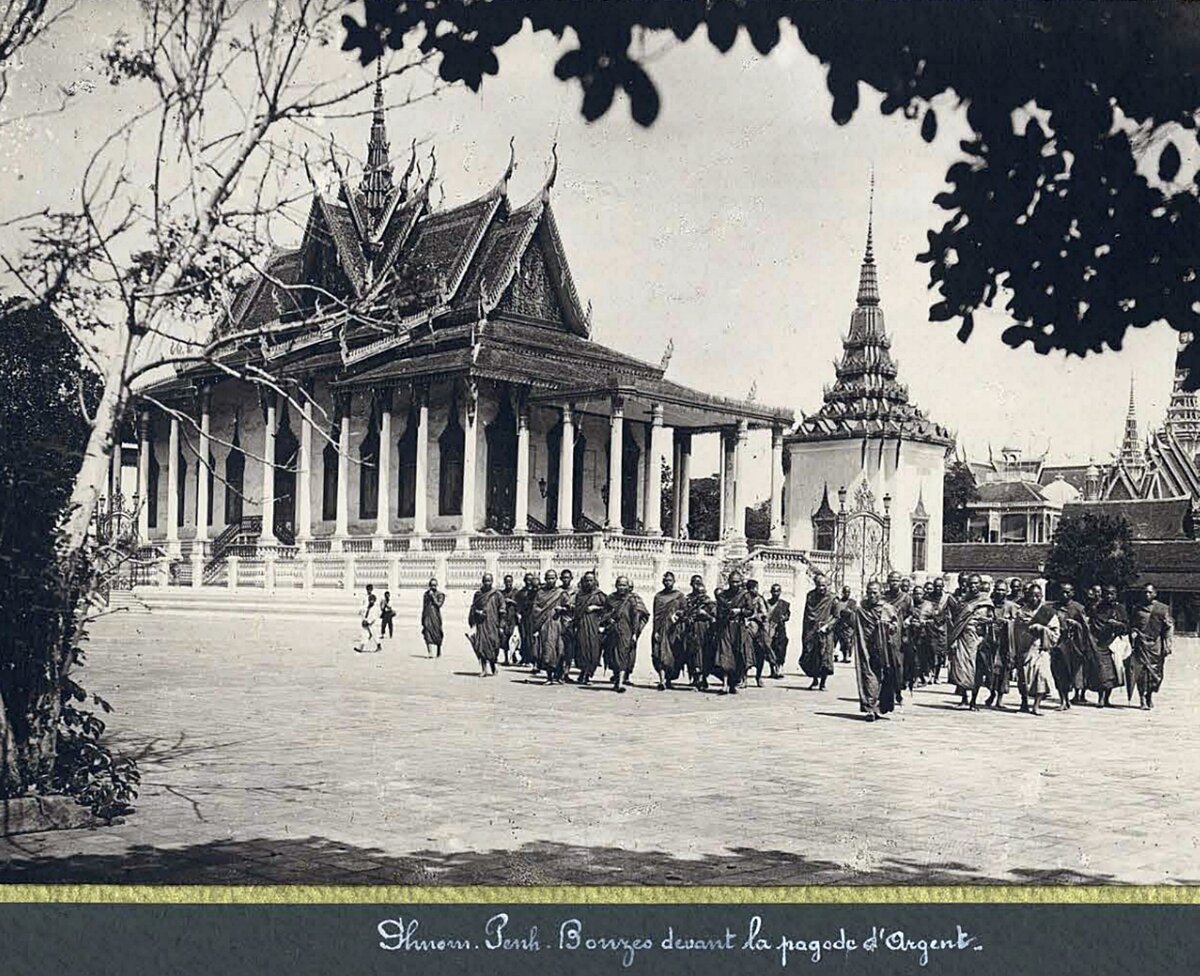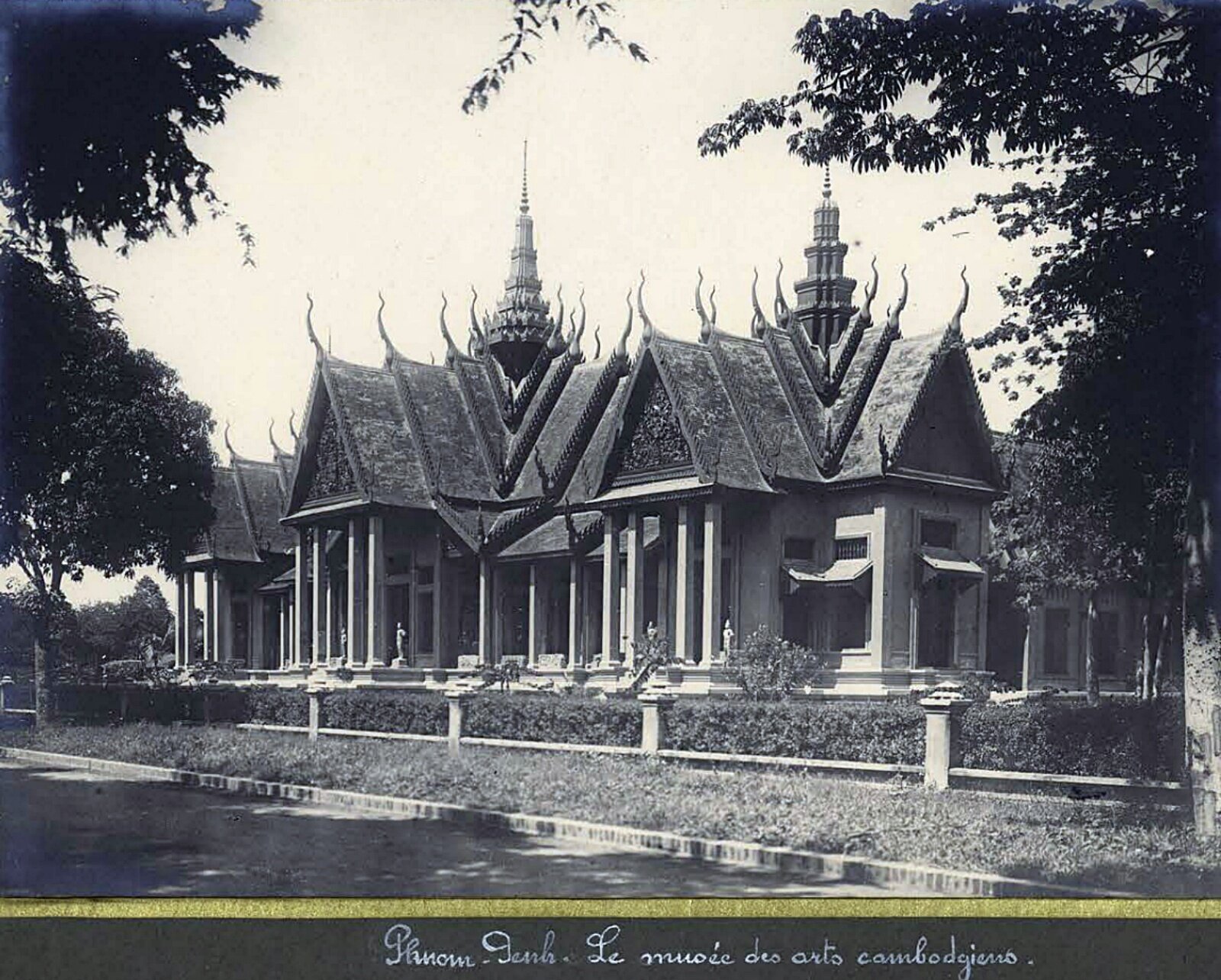Photographes d'Asie (1840-1944)
An exceptional source for documented bioprofiles of photographers active in French Indochina, including Cambodia, in the 19th and early 20th century.

Launched in the early 2000s, when the web development of blogs was still rudimentary, this site is exceptional not only by the richness of information but also because the author, Marie-Hélène Degroise (6 March 1947, Colombes ‑19 June 2012, Beaune, France), had been Head of the Iconothèque (Image Library) at Archives nationales d’outré-mer (ANOM), Aix-en-Provence, for several decades.
Dealing with some 600 photographers and image publishers active during the period 1840 – 1944 in Asia (including Southeast Asia), the Indian and Pacific Ocean areas, Africa, the Americas and West Indies, these biographical notes are thus precisely sourced, and remain precious for further research because they also state — whenever possible — the location of respective photo collections.
An alumna of Ecole des Chartes, Marie-Hélène Degroise had previously worked with the Service Historique (History Department of the Ministry of French Airforce when she joined the Archives nationales center devoted to the former colonies and French possessions worldwide, becoming Chef du Patrimoine (Heritage Chief Manager). After her retirement, she took photography as a hobby,
Here is what we can find for instance about the first publishers of postcards in “Indochina”:
Parmi les plus anciens éditeurs de cartes postales installés à Saigon, il faut citer tout d’abord l’Imprimerie nouvelle Claude et compagnie, fondée en 1881 et installée 125 – 127 rue Catinat, qui a édité certains ouvrages de Raquez, et des cartes postales “en nuage” sur toute l’Union indochinoise, notamment des clichés d’Antonio. La maison est à la fois imprimerie, librairie et papeterie, ce qui la rend tout à fait apte à la diffusion de cartes postales, réparties en plusieurs série : Série Saigon, Série Cochinchine, notamment. Mottet et compagnie (Henri Blanc et P. Hauff) sont des négociants en importations et exportations, installés eux-aussi rue Catinat à Saigon. Ils éditent des cartes postales “en nuage” sur toute l’Indochine, mais aussi sur la Chine : une grande partie forme la Collection Phénix (vers 1907), une autre la Collection Sylvia. Dès 1903, S. Leblanc publie une série sur le Cambodge “en nuage” ; il fait partie de la commission municipale de la ville de Phnom-Penh. Sous le titre de Collection G. Comeil, est publié un reportage complet sur le voyage officiel effectué par le gouverneur général Beau au Yunnan, en 1905. On ignore à quels photographes ces éditeurs ont emprunté les clichés ainsi diffusés, ou même s’ils n’en sont pas les auteurs. Legros est lui aussi imprimeur, mais signe ses cartes postales dès 1902 : Clichés Legros et Cie, Saigon — Mod. déposé, même pour les séries publicitaires pour Félix Potin. Un autre signe : Edition Fleury-Reproduction interdite, pour une série sur le Yunnan. Le personnage qui signe A.T. a édité plusieurs centaines de cartes postales sur toute l’Indochine, numérotées et légendées en rouge. Une série numérotée est intitulée : Voyage aux Monuments Khmers. Dès 1901, la librairie-papeterie Brunet, installée 76 rue Catinat, édite des cartes postales “en nuage” sur la Cochinchine, opération poursuivie par madame Brunet : ce libraire signe ses cartes “J. Brunet, Saigon”, mais il a un homonyme qui signe “P. Brunet, Chine et Japon”, bien qu’il édite aussi des cartes sur Saigon. A. Guérin est éditeur à Hué et publie des cartes postales “en nuage” avant 1904 ; il semble être le premier à faire photographier les tombeaux des empereurs d’Annam. Quant à Albert Portail, contemporain de Fauvel, il est arrivé à Saigon en 1905 comme employé de l’imprimerie Ménard et Rey. Il rachète en 1910 l’Imprimerie nouvelle de Claude, édite à Saigon dans les années 1920 – 1930 des cartes postales, sans indiquer les auteurs des clichés : il est possible que pour réaliser une production importante il ait possédé un atelier et employé des opérateurs, dont les noms restent inconnus, ou racheté des fonds de photographes. L’annuaire de 1922 le dit imprimeur-libraire, 185 – 193 rue Catinat, et indique comme raison sociale Librairie des Ecoles, mais aussi Imprimerie nouvelle, tout en précisant qu’il est le successeur de la maison Coudurier et Montégout (qui avaient déjà racheté la maison Claude), et qu’il a une succursale à Phnom-Penh. Il est jusqu’en 1935 le plus grand libraire de Saigon. Il passé à ses deux fils son entreprise et rentre en métropole cette année là. Vers 1915 apparaissent quelques cartes postales dont l’intitulé est : “Collection Roger. Cliché Voiry”.
[Among the oldest postcard publishers established in Saigon, we must first mention the Imprimerie nouvelle Claude et compagnie, founded in 1881 and located at 125 – 127 rue Catinat, which published some of Albert Raquez’s works, and “en nuage” postcards [with the photograph “in a cloud” situated in the upper corner in order to leave enough blank space to write messages] throughout the Indochina Union, including photographs by Antonio. The company was at the same time a printing house, bookstore and stationery store, which made it perfectly suited to the distribution of postcards, divided into several series: Saigon Series, Cochinchina Series, in particular. Mottet et compagnie (Henri Blanc and P. Hauff) were import and export merchants, also established on rue Catinat in Saigon. They published “cloud” postcards throughout Indochina, but also on China: a large part formed the Phénix Collection (around 1907), another the Sylvia Collection. As early as 1903, S. Leblanc published a series on Cambodia “in the clouds”; he was part of the municipal commission of the city of Phnom Penh. Under the title Collection G. Comeil, a complete report on the official trip made by Governor General Beau to Yunnan in 1905 was published. It is unknown from which photographers these publishers borrowed the photographs thus distributed, or even if they were not the authors. Legros was also a printer, but signed his postcards from 1902: Clichés Legros et Cie, Saigon — Mod. dépôt, even for the advertising series for Félix Potin. Another sign: Edition Fleury-Reproduction interdite, for a series on Yunnan.
The person who signed “A.T.” published several hundred postcards throughout Indochina, numbered and captioned in red. A numbered series is entitled: Voyage aux Monuments Khmers. From 1901, the Brunet bookstore and stationery store, located at 76 rue Catinat, published “cloud” postcards of Cochinchina, an operation continued by Madame Brunet: this bookseller signed his cards “J. Brunet, Saigon”, but he had a namesake who signed “P. Brunet, China and Japan”, although he also published cards of Saigon. A. Guérin was a publisher in Hue and published “cloud” postcards before 1904; he seems to be the first to have the tombs of the emperors of Annam photographed. As for Albert Portail, a contemporary of Fauvel, he arrived in Saigon in 1905 as an employee of the Ménard et Rey printing house. In 1910, he bought Claude’s Imprimerie Nouvelle, publishing postcards in Saigon in the 1920s and 1930s, without indicating the authors of the photographs: it is possible that to achieve a large production he owned a workshop and employed operators, whose names remain unknown, or bought photographers’ funds. The 1922 directory lists him as a printer-bookseller, 185 – 193 rue Catinat, and states as his business name Librairie des Ecoles, but also Imprimerie Nouvelle, while specifying that he was the successor to the Coudurier et Montégout firm (which had already bought Claude’s firm), and that he had a branch in Phnom Penh. Until 1935, he was the largest bookseller in Saigon. He passed his business on to his two sons and returned to mainland France that year. Around 1915, a few postcards appeared, titled: “Roger Collection. Cliché Voiry”.]
Among her other publications:
- Le Service historique de l’Armée l’Air, nd.
- Introduction to CD-ROM “Mandarins, Marsouins, Missionnaires et Colons”, Association des Amis du Vieux Hué, nd.
- “La photographie en Indochine avant 1914 et les fonds conservés aux Archives nationales d’outré-mer”, in Vietnam, edited by Gilles De Gantès and Phuong Ngoc Nguyen, Presses universitaires de Provence, 2009, p 287 – 300. (Open Edition).
Tags: photography, French photographers, French Indochina, 1840-1944

